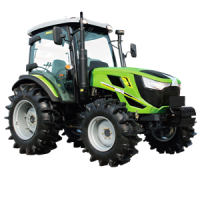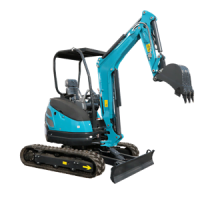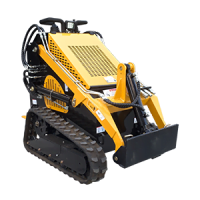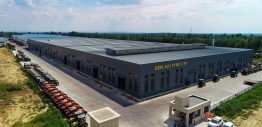Einführung
Von der Vorbereitung der Felder bis hin zum Pflanzen, Besprühen, Ernten und Transportieren von Produkten dient der einfache Ackerschlepper als unverzichtbare Antriebseinheit für die Produktivität der modernen Landwirtschaft. Robuste und vielseitige Traktoren sorgen in unzähligen landwirtschaftlichen Betrieben für mechanische Kraft.
Das Verständnis der Traktorfähigkeiten kann Betriebsleitern dabei helfen, die richtigen Modelle auszuwählen, die zu den Anbaugeräten passen, um die Produktivität und Kapitalrendite zu maximieren.
In this comprehensive tractor guide, key topics include:
- Evolution of Tractor Development
- Primary Tractor Benefits
- Specialized Tractor Types
- Factors Influencing Productivity
- Latest Innovations
- Considerations When Buying
- FAQs
Appreciating how tractors confer flexibility, efficiency, andtargeted power year-round establishes context before diving into specifics.
Evolution of Tractor Development

Mechanized farming began in the late 1800s using steam engines, but these large machines compacted soils. Smaller gasoline-powered tractors emerged in the 1910s, but it wasn’t until Harry Ferguson developed the three-point hitch system in the 1930s that tractors could efficiently power implements.
Rapid advancements followed:
- Diesel engines (1930s)
- Hydraulic power (1940s)
- Power Take-Off systems (1950s)
- More compact sizes (1960s)
- Enhanced safety and comfort (1970s-1990s)
Integrating new technologies continues today.
Primary Tractor Benefits

Farm tractors confer many productivity and efficiency advantages:
Leistung – Engines rating 20 to 620+ horsepower suit light or heavy-duty implements in all soil conditions.
Adaptability – Front/rear hitches and Power Take-Offs easily connect implements year-round.
Effizienz – Complete jobs faster with less labor compared to animal teams.
Komfort – Quiet, heated cabs with suspension seats reduce operator fatigue.
Technologie – Auto-steering, fleet data integration, and AI analytics optimize workflows.
Their versatility across thousands of farming tasks drives tractor adoption.
Specialized Tractor Types
While all tractors share core power transmission components, distinct configurations suit certain applications:
Reihenfruchttraktoren – Narrow for between-row work with high ground clearance.
Kompakttraktoren – Light-duty models with front loaders for chores and hauling.
High Horsepower Tractors – Huge machines exceeding 400 engine HP for heavy towing and field demands.
Orchard Tractors – Extra ground clearance helps navigate under trees.
Special Use Tractors – GPS-guided autonomous models or niche vineyard designs help specialized crops.
Matching the optimal tractor with farm size and implements boosts productivity.
Factors Influencing Productivity
Tractors work in conjunction with the tools they power – mismatched equipment wastes potential:
Table 1. Key Factors Influencing Traktor Produktivität
| Faktor | Beschreibung | Auswirkungen |
|---|---|---|
| Engine Horsepower | Force generated by tractor engine | Match power rating to heaviest implements |
| Hitches and PTO | Attachment interface standards | Ensure implements mate correctly for operation |
| Gewichtsverteilung | Balance and stability affect traction | Poor weight balance reduces pulling effectiveness |
| Technology Extras | Auto-steering, data analytics | Save fuel, time through precision optimization |
Additionally, regular maintenance and tire style significantly alter efficiency over years of use.
Latest Innovations
Integrating new technologies into tractors continues elevating productivity:
Remote Monitoring – Telematics and control apps enable managing tractors fleets from afar.
Autonomous Driving – Auto-steering and imaging systems allow tractors to self-navigate fields without an operator via GPS.
Electrification – Hybrid engines and increased electronic control of mechanical systems reduce complexity.
AI Integration – Machine learning harnesses real-time data from sensors to optimize decisions.
Alternative Fuels – Biofuels, hydrogen mixes, and batteries diminish environmental footprint.
Blending computing with brute strength pushes tractors into the future.
Considerations When Buying
With many tractor models and price points available, key purchasing considerations include:
Bestimmungsgemäße Verwendung – Match application needs to tractor class and features. Don’t overbuy or underbuy relative to actual implement demands.
Markenreputation – Stick with established companies offering strong local dealer support networks for service.
New vs Used Condition – Weigh tradeoffs of new or used models based on budget, options required, and your tolerance of risk, capabilities for maintenance and repair.
Technology Extras – Determine if productivity-enhancing telematics systems integrate with your farm data ecosystem or automated equipment dreams. Pay for what boosts bottom lines rather than just seeming flashy.
Finding your own optimum combination of utility and efficiency accelerates success.
Fazit
Tractor technology continues advancing since its inception over a century ago. Matching the optimal tractor to implements, fields, crops, and operators enables maximizing productivity and reducing unnecessary costs and labor. Appreciating modern capabilities and best practices around tractor selection, operation and maintenance will pay dividends every season.
FAQs
How long should a farm tractor last?
The average lifetime is 8,000 to 12,000 hours over 10 to 20 years depending on annual use. Proper maintenance and avoiding overloading significantly extend service.
When was tractor air conditioning introduced?
While enclosed cabs debuted in the late 1940s, it wasn’t until the 1960s and 70s that air conditioning and heating systems became common to keep farmers comfortable in all weather extremes for long hours.
Can anyone operate heavy farm tractors safely?
Basic operation may not require extensive training but working with PTO-powered implements, on slopes and roadways certainly necessitates proper safety guidance to prevent accidents and injuries due to machine complexity relative to typical passenger vehicles. Taking operator courses demonstrates prudence.





-1.png)